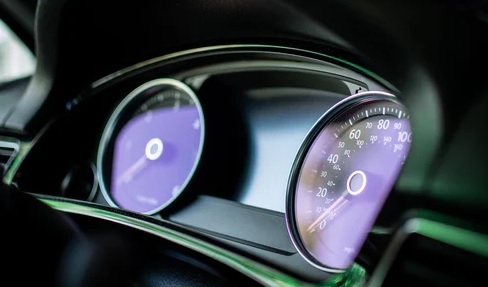We all love cars. Sometimes they are the most prized possessions. We keep them with care and drive them carefully. From avoiding potholes to never missing a service date, we make sure we do everything to keep the car in proper shape.
But the way life works is that things don’t always happen as planned. No matter what precautions you take you will find that some of the other mishaps are bound to happen.
A similar situation is when one fine day you are driving and you notice a few gauges or all in your car not working. You obviously had no role to play in this. Instead of worrying about this, it is better to apply your mind to a solution.
Here are some common scenarios and a general action plan to tackle them.
All gauges stop working
It is not a common occurrence but it’s not unheard of. You might find one day that you switch your car on but none of the gauges in the instrument cluster budge at all. No need to freak out. Your car will still be in driving condition but you can take care of this problem before you head out for a drive for an upfix’s instrument cluster repair or servicing.
The problem is such a case is usually with the wiring or with the fuse. Both these hamper the electricity flow towards the instrument cluster. Any fault with these two will result in the failure of all the gauges in the cluster.
To fix this first make sure that there is power in the fuse on both sides when the ignition is on. A multimeter is a tool that detects such currents and will help you identify the problem. If you do not have this or are not capable of using such tools then you can take your car to the mechanic. It’s always nice to stand alongside the mechanic to understand and learn how to fix such problems.
If the fuse is working fine then the next thing you need to check is the points and power supply to individual gauges. For this, you’ll have to take out the instrument cluster from the dash. This process is a little tricky but there are detailed step-by-step instructions for every model on the internet.
Usually, you only have to remove a few screws and the cluster can be moved.
Malfunctioning needles
Sometimes you might notice that the needles are behaving in an unusual manner or are simply pegged at the maximum reading. This usually points at common faults like instrument voltage regulator or grounding.
The instruments in your car’s gauges work by receiving electricity through a voltage regulator in the car. This problem can be easily fixed by getting the regulator fixed. Sometimes the regulator is fine so all you need to do is re-connect the regulator and see if the needle works again.
Gauges that give the maximum reading all the time are usually caused by grounding.GRounding is a phenomenon where the electricity is being conducted out of the wire at a break or corrosion in the wire. So to fix this you need to look for places where the wire is rusting or if the copper inside is exposed.
When only one gauge is not working
The common problem diagnosed behind a single unit giving problems usually points towards three problems- problem in the gauge, problem in the wiring or problem in the sending unit.
Fixing this problem is not that difficult but you do have to be comfortable with removing the gauge and unscrewing some other parts.
Let’s use an example of the fuel gauge and take it as a faulty gauge. To fix this you need to first locate the sending unit and unplug it. Turn the ignition to the on position and check if the needle moves. It should stay at zero. If you connect the other end of the sending unit to a surface then it should jump to the maximum reading. Such behavior points out that the sending unit is at fault.
But if you ground the wire and nothing happens to the needle then there is a problem with the gauge itself.
This test will work on other types of gauges like the temperature gauge too. You can repeat these steps on them and figure out where the fault lies.
Faulty Speedometer
Most gauges in your car are either analog or digital. They mostly use sensors and sending units.
Speedometers are in a different league as they can be mechanically or electrically worked. Also instead of a sending unit, they use speed sensors and wires. These differences depend on the vehicle you have so the speedometer repair has to be done accordingly.
If the vehicle you own uses cables the speedometer is physically connected to the transmission through a cable. The problem with cables is that they can rust or break completely. These are the common problems that you can diagnose. When the cable breaks or has a slight cut the needle moves a little or doesn’t move at all.
In this case, you can replace the whole wire. Disconnect it from both the points and put a new one there. Make sure the new connections you make are secure and won’t come off on a bumpy road. To replace the wire you might sometimes have to remove the cluster from the dash so be prepared for some tiring work.
Such problems are quite common in cars and the fixes are not that complex either. Even if you have no experience with electricals or a screwdriver you can go step by step and keep some confidence. Take your time and save your money by diagnosing and fixing these problems yourself.


